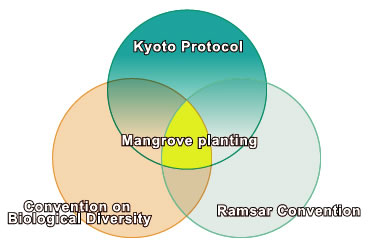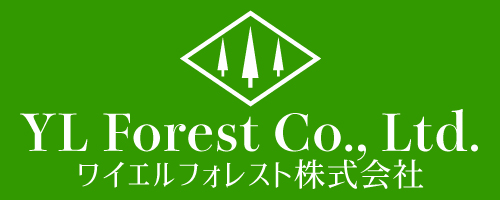What are mangroves?

The term mangrove denotes a “forest” growing in water in a type of area called a salt marsh (salt wetland) where fresh water and seawater mix at the mouth of a river. Such areas, known as “forests in the sea,” are habitats for fish and shellfish as well as migrating birds.
The kinds of plant community are said to number between 70 and 100 worldwide, with the main kinds generally known being trees that belong to three families: Rhizophoraceae, Verbenaceae, and Sonneratia alba (Sonneratiaceae).
International Society for Mangrove Ecosystems
WEB SITE: http://www.mangrove.or.jp/index.html
Mangroves are distributed chiefly in equatorial regions such as Southeast Asia, the coast of India, the South Pacific and Australia, Africa, and the Americas. In Japan, they are found in Okinawa and Kagoshima Prefectures.
YL Invest is developing a mangrove planting project centered on the island of Sumatra in Indonesia with the objective of carbon dioxide absorption and fixation.
The photosynthetic capacity of a mangrove forest is very high. According to the latest research, annual carbon dioxide uptake as high as 10-25 tons per hectare of mangrove forest is being reported.
Since mangrove forests, growing as they do in the special environment of a salt marsh where fresh water and seawater mix, not only nurture both freshwater and saltwater fish and shellfish, but also provide feeding and resting grounds for waterfowl, they play an important role in maintaining biodiversity. The earthquake and tsunami that occurred off the coast of Sumatra on December 26, 2004, confirmed that mangroves also serve as protection against disasters. We therefore undertook this project with a view not only to meeting the challenge of global warming, but also to securing the lives and livelihoods of people who live in tropical coastal areas.
We therefore believe that in protecting the global environment, we must first support not only the mangrove forest but also the life of the local community or risk losing sight of the true meaning of “the future of the world.”
Surely it’s a proper mission for our generation, having destroyed so much forest, to recover the abundant green forest ecosystem that formed the original basis of the carbon cycle, the carbon sink.

